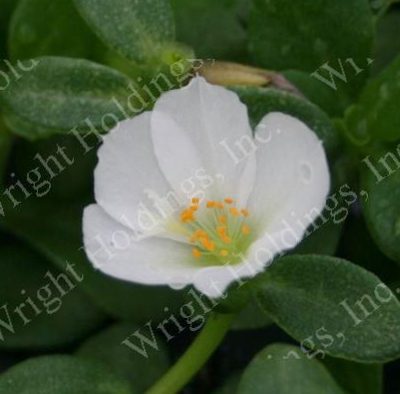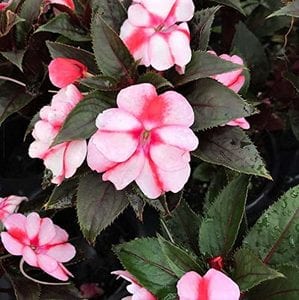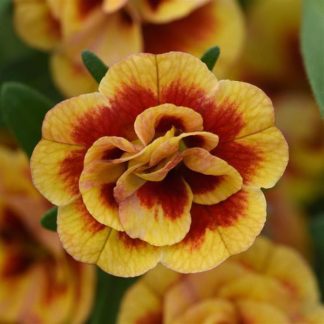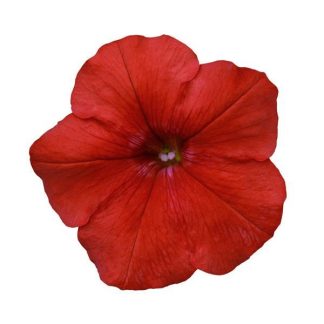Description
White Purslane: A Snowy Carpet That Loves the Sun
Welcome to the World of White Purslane
When you picture summer heat, you might see wilting flowers and parched soil. White purslane flips that picture upside down. It blooms brightest when the mercury climbs. Its petals open wide in morning light, close again for a short midday nap, and then sparkle in cool afternoon air. In other words, it is a cheerful time-keeper in your garden.
We will explore what makes white purslane special, how it grows, and why it belongs in pots, beds, and baskets. After that we will walk through care from seed to self-sown patch. By the end, you and white purslane will feel like old friends.
Meet the Plant
A Blanket of Snow in July
White purslane (Portulaca grandiflora or a white form of Portulaca oleracea) hugs the ground and spreads in tidy waves. Each stem is smooth, almost succulent, and dotted with fleshy leaves shaped like tiny paddles. When the sun reaches the right angle, pure-white flowers burst open, each bloom as round as a coin and sometimes brushed with a little yellow in the throat. But most of all, they shine against green foliage like fresh snow on grass.
Roots in Warm, Dry Places
Purslane comes from South American plains where summers are hot and rainfall scarce. The plant learned early how to store water in thick leaves. That trick lets it thrive in rock gardens, sandy borders, and roadside crevices where other plants quit.
Growth Habit in a Snapshot
- Height: 4–6 inches.
- Spread: 12–16 inches, wider in loose soil.
- Lifespan: Tender annual in cold zones, perennial in frost-free areas.
- Bloom Window: Late spring through first light frost.
- Pollinator Appeal: Bees and tiny butterflies sip from its open faces.
How White Purslane Fits Into Your Space
Groundcover With Sparkle
Because it stays low, white purslane weaves between stepping-stones, tumbles over raised wall edges, and fills empty pockets near taller perennials. Instead of bare mulch, you get a living carpet that glitters all season.
A Natural in Containers
Trailing stems make dramatic drapes over pots and baskets. Mix it with bright petunias, silver miller, or chartreuse sweet potato vine for a glowing combo. We will cover container tips later.
Edible, Too
Leaves of common purslane are crunchy and lemony. White purslane shares that flavor. Toss a few sprigs into salad or place blooms on chilled soup for garden-to-table charm. Harvest only clean, unsprayed plants.
Child-Friendly Planting
Kids love how blossoms open with the sun. Place a container by the breakfast table. They can record opening times, a fun way to link gardening and science.
Why Gardeners Love White Purslane
- Heat Champion – It keeps blooming when petunias wilt.
- Water Saver – Thick leaves hold moisture, so you irrigate less.
- Self-Cleaning – Blooms drop on their own; no deadheading marathons.
- Quick to Color – Seeds sprout fast, and flowers follow in as little as six weeks.
- Low Disease Pressure – Few pests bother its juicy stems.
- Versatile – Works in borders, baskets, window boxes, xeric gardens, even rooftop beds.
Caring for White Purslane
Light Requirements
Give it at least six hours of full sun. More sun equals more blooms. In deep shade, stems stretch thin and flowers stay closed.
Soil and Drainage
Loose, sandy loam is perfect. Purslane hates wet feet. If ground is heavy, mix coarse sand or small gravel before planting. When growing in pots, choose a cactus or succulent blend.
Watering Wisdom
Water deeply after planting to settle roots. After that, water when the top inch of soil dries. In other words, wait for soil to feel warm and crumbly before you wet it again. Overwatering causes root rot and dull color.
Feeding and Fertilizer
Purslane survives on lean diets. A monthly drink of half-strength, balanced liquid fertilizer keeps growth steady in containers. In beds, an annual sprinkle of compost is enough.
Temperature and Climate
Ideal daytime range: 75–95 °F. Night temps above 60 °F keep flowers coming. Brief dips to 40 °F are okay, but frost ends the show.
Pruning and Grooming
If plants sprawl too far or become uneven, pinch stems back by one-third. New side shoots appear fast. No need to remove faded blooms; they drop by themselves.
Pest and Disease Check
- Aphids may visit tender tips. Rinse with a firm spray of water.
- Slugs rarely chew thick leaves, but hand-pick if you see them.
- Root Rot shows up in over-wet soil. Improve drainage and cut back water.
Growing White Purslane in Containers
- Pot Choice – Use a bowl, basket, or trough with drainage holes. A shallow dish works, too.
- Soil Mix – Blend two parts potting mix with one part pumice or coarse sand.
- Planting – Space starts 6–8 inches apart to allow trailing.
- Water Rhythm – Containers dry faster. Check daily in high summer.
- Feeding – Feed every four weeks with dilute fertilizer.
- Position – Place pots on a sunny step, balcony rail, or rooftop ledge.
Propagation and Saving Seed
From Seed
- Sow indoors 6–8 weeks before last frost.
- Press seeds onto moist mix; they need light to germinate.
- Keep at 70–75 °F. Sprouts appear in 7–10 days.
- Transplant outside when soil warms to 65 °F.
From Cuttings
- Snip 3-inch stem tips.
- Let ends callus one day.
- Insert into gritty soil.
- Water lightly until roots form, about two weeks.
Saving Seed
Let a few pods dry on the plant. Clip when tan and papery. Rub to release tiny black seeds. Store in a cool jar. Next spring you will have free plants.
Seasonal Care Calendar
| Season | Tasks |
|---|---|
| Early Spring | Start seeds indoors or buy plugs. Harden off outdoors during mild afternoons. |
| Late Spring | Plant out after danger of frost. Water to establish. Mulch with gravel to keep soil warm. |
| Summer | Check water weekly. Pinch back leggy stems. Enjoy nonstop blooms. |
| Early Fall | Collect seeds. Take cuttings for indoor pots if you want winter color on a sunny sill. |
| Late Fall | Frost kills outdoor plants. Compost spent foliage. Clean containers for next year. |
Creative Design Ideas
Moon Garden Magic
White flowers glow at dusk. Pair white purslane with evening-scented nicotiana, silver artemisia, and pale pink gaura for a soothing moon garden.
Rock-Solid Accent
Plant in cracks of a dry-stack wall. Stems will spill like soft foam over stones, softening hard lines with living lace.
Tabletop Centerpiece
Fill a low ceramic bowl with white purslane and one dwarf sedum. Place on picnic tables rather than cut bouquets. It stays fresh for months.
Edible Border
Mix with golden nasturtiums and purple basil for beds that feed both eyes and stomach.
Troubleshooting Common Problems
- No Blooms – Check light. Less than six hours of sun? Move plant.
- Yellow Leaves – Water may be standing. Let soil dry and add drainage grit.
- Leggy Stems – Crowding or too much nitrogen. Trim back and skip next feeding.
- Brown, Mushy Base – Root rot. Discard plant, improve soil, start fresh.
Sustainable Benefits
White purslane thrives on what nature gives. It asks for little water, shrugs off heat waves, and draws pollinators. Instead of thirsty lawns, use it as a living mulch between stepping-stones. You will reduce irrigation, save time, and welcome more buzzing friends. After more than one season, self-sown seedlings pop up in sunny corners, a gift back to you for your good stewardship.
How to Care for White Purslane—Step-by-Step
- Pick Sun – Six hours minimum.
- Prep Soil – Loose, gritty, and fast draining.
- Plant – Set starts level with soil. Space 8 inches.
- Water Once – Give a deep drink. Wait until soil dries before watering again.
- Feed Lightly – Monthly, half-strength fertilizer if in pots. None needed in rich ground.
- Pinch as Needed – Trim to shape and renew flowers.
- Watch for Pests – Blast aphids with water. Remove slug-damaged stems.
- Collect Seeds – Allow a few pods to dry. Store seeds cool and dry.
Follow these easy steps, and white purslane will sing through the hottest days.
Beyond the Basics
Indoor Wintering
If you want a taste of summer on your windowsill, pot a few cuttings before first frost. Place them in the sunniest indoor window. Water sparingly. Blooms will be fewer, yet the green stems offer fresh crunch for salads.
Teaching Moments
Use white purslane to teach children about diurnal flowers. Ask them to note the time when blooms open and close. They can graph the pattern. Learning feels lighter when petals guide the lesson.
Community Plant-Share
White purslane produces many seeds. Share them with neighbors. Soon whole streets glow white each July. Gardens join hands across fences, building friendship one bloom at a time.
A Gentle Glow Beneath the Sun
White purslane is more than a groundcover. It is a bright promise that even the fiercest heat can bring beauty. When we plant it, we invite resilience, thrift, and simple joy into our days. May its snowy petals light your path through summer and remind us all that small wonders often shine the brightest.




